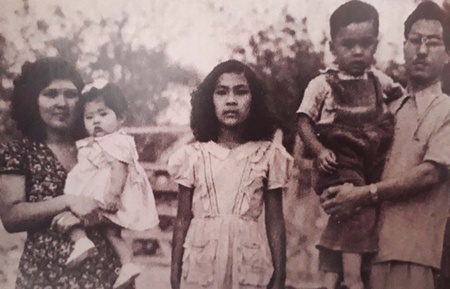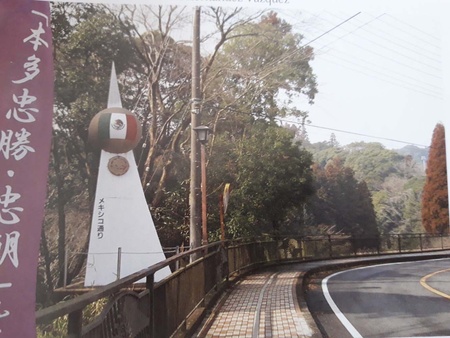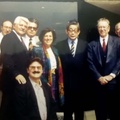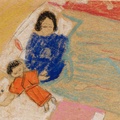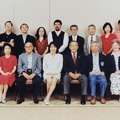The book The Japanese in Morelos. Testimonies of a friendship 1 is a sample of the presence of Japanese immigrants and the culture of that country on Morelos soil. Alejo Ebergenyi was in charge of coordinating the 15 articles that make up this book and which are framed in a great historical arc that goes from the year 1614 to the present day.
The book begins and concludes with two essays written by Guillermo Quartucci. The first, called “Hasekuraen Cuernavaca. “Historical Fiction Story” , addresses in a fictional way the passage through Cuernavaca of the first group of Japanese who arrived in New Spain in the year 1614, commanded by Hasekura Tsunenaga. The second article, “Otaku culture in Cuernavaca”, reveals the influence that videos, manga, anime and cosplay have on thousands of young people in this city who are followers of these expressions of Japanese culture. The setting where young people gather is the popular FrikiPlaza Zone, a building with colonial architecture in the heart of Cuernavaca, where fandom or fans of this genre of Japanese culture regularly look for news about their favorite heroes.
The book reproduces a well-known essay published by Professor Maria Elena Ota Mishima, “A New Spanish mural in the cathedral of Cuernavaca, the 26 martyrs of Nagasaki”, in 1981. The article is still very valid because it explains the history of This mural was painted in the 17th century and describes the sacrifice of the Mexican friar San Felipe de Jesús in Nagasaki in 1597.

The essay “Manuel Kaichi Abe: from day laborer to owner” is very important to understand the history of the first Japanese immigrants who settled in Cuernavaca. This work written by Alejo Ebergenyi, based on data from the interview given to him by his great-grandson Roberto Abe, describes how this immigrant arrived in Mexico in 1906 (hired to raise the rails of the Manzanillo-Guadalajara railroad) and how in the following decade he began to create a huge emporium from his first store, “La Vencedora”, which was established in the center of Cuernavaca.
The following article written by Sadayoshi Kogiso is very interesting because it tells us the life of one of his relatives, Mr. Junzō Oguri, who was one of the most recognized landscape architects in Morelos. Oguri left Japan at the age of 16 aboard the yacht of Swedish magnate Axel Wenner-Gren, one of the richest men in the world in 1930. Due to the war, Wenner's yacht could no longer cross the seas so that the magnate stayed to settle in Cuernavaca. Oguri dedicated himself to gardening, a trade he learned in the botanical garden that the Swede had in the Bahamas, and he took care of the gardens of Wenner's residence in Cuernavaca. Over the years, Oguri would set up his own nursery and garden business and was in charge of creating the landscapes for Barbara Hutton's residence in what is now the Camino Real Sumiya Hotel and the gardens of the Olympic Village during the Olympic Games. Mexico in 1968.
In a later article, “History of the Sumiya Royal Road”, Kogiso himself briefly tells the story of the eccentric American millionaire Barbara Hutton who called Junzō Oguri to create the Japanese garden in her country house. Hutton also had a replica built of the Kabuki-za Theater, a treasure of Japan in Mexico, which is still preserved in that hotel.
In the article by Carlos Uscanaga, “Japan in Morelos, the visit of Japanese students by Kanju Nakamura”, the history of this prominent member of the Japanese Diet is discussed, who promoted and organized the first student trip to Mexico before the Second World War. World War. Nakamura accompanied the group of five students who visited Morelos in 1931, who were received by the state governor himself, Vicente Estrada Cajigal. The visit of these students is important because it marks the beginning of exchanges between students from both countries and shows us the “similarity between the Mexican and Japanese people in the physical and spiritual” as the Japanese students considered during their visit.
The article “The Temixco camp: persecution and organization of Japanese emigration”, authored by the writer, shows the difficult stage of concentration of the Japanese communities during the war and explains the reason for this measure. But it also highlights two fundamental elements that allow us to understand the success of this community in Mexico. The first refers to the perseverance, work and organization that the immigrants showed during the conflict. The second emphasizes the effort that the community put into educating their children in Temixco and other places of concentration. It is not strange, therefore, that this generation is full of doctors, dentists, administrators and professionals in general who have a prominent role in the society of today's Mexico.
The life of Dr. Seiki Hiromoto is an example of the story of success and determination of the Japanese community in Mexico and of the service that this immigrant provided to the community of Temixco as a doctor. The story, “Life in Temixco. Testimony of Doctor Seiki Hiromoto” was written by Carlos Sierra Becerra. It is reported that Hiromoto did not charge for consultations to patients who did not have the means to pay for it, so the residents thanked him for his attention by paying him with chickens, tortillas, fruits or eggs. It is not surprising that upon Hiromoto's death “thousands of people accompanied him and he had to stay awake for three nights so that people would be close to his doctor.”
The articles written by Virginia Meza recreate the experience of two educational centers in Morelos today. In the first article, “Coyolxauhqui Cultural Center, a bridge of communication between two cultures,” Meza nostalgically narrates the life of a girl “M” who from her first years of school became interested in the Japanese language and culture. “M”'s perseverance will eventually lead her to master the Japanese language and found a school, the Coyolxauhqui Cultural Center, where Japanese classes are taught for the Nikkei community in Cuernavaca and Spanish for Japanese people interested in learning the same. The Coyolxauhqui Center has become a small but fundamental school that has contributed to the identity of the Nikkei community in Cuernavaca and the knowledge between Japanese and Mexican cultures.
The other essay by Virginia Meza, the “Mexico-Japanese Cultural Institute of Morelos”, describes the history of that institute, highlighting how since 1991, it has been the nucleus of teaching the Japanese language for children and adults. With great efforts and with the collaboration of the Arai family, Mr. Sadayoshi Kogiso and the Nikkei community of Morelos in general, the school has currently been maintained thanks to the generous attitude of the teacher Kyōko Matsushita who is in turn the director and the only teacher. The Institute, in addition to functioning as an educational center, has been a participant and promoter of the exchange of Japanese students in Mexico and Mexicans in Japan, which has truly promoted the relationship between both nations.
From this educational and cultural exchange perspective, the authors Santhony and Ernesto Takayanagi, in their article “Minoru Fukahara and the cultural remanences of the Minoh exchange students”, show us the tireless work of the honorary ambassador of the city of Cuernavaca, Minoru Fukahara, in promoting academic-cultural relations between that city and the Japanese city of Minoh. With his work, Fukahara has ensured that Japanese families know “the spirit of Mexican youth and their human nobility” and that Mexican young people practice and learn the Japanese language and culture throughout 25 exchange trips where 234 have participated. people. At 90 years old, “this Mexican samurai of culture,” as the authors describe Fukahara, is undoubtedly another living treasure of relations between Mexico and Japan.

Related to the cultural exchange between Mexico and Japan, Victor Hernández in his article “Ōtaki and Cuernavaca: the meeting of two sister cities”, addresses the relationship between these cities from a historical perspective by describing the shipwreck of Rodrigo de Vivero in the Japanese coasts in the year 1609. In order to remember that event that began contacts between Mexico and Japan, the city of Ōtaki and the small coastal town of Onjuku (a fishing town that helped the crew of Rodrigo's ship) They organized a festival to remember and highlight the relations between Mexico and Japan that acquired great relevance when the president of Mexico, José López Portillo, attended the celebration in 1978.
In the article by Virginia Valdivia and Vania de la Vega, “From Yokohama to Cuernavaca: reflections on the establishment of Nissan CIVAC”, the authors gave a brief account of the establishment of the Nissan car plant in the capital of Morelos in 1966. The document also highlights the economic and social importance that the installation of the Japanese factory meant for Cuernavaca - the first outside of Japan - and shows the relevance it had for the relations between both countries.
Shozo Ogino's essay “The Prima Donna Shigeko Watson” exposes the active participation of this Japanese dancer in the dissemination of that country's culture in Morelos. The dancer who arrived with her husband in Cuernavaca in 1974, the American Stanley Watson, throughout her life and as an active member of the Association of Friends of the Palacio de Cortés Museum, was tireless in promoting various exhibitions in that facility. Shigeko died in 2003 in these lands at the age of 77, showing the character of women; that is, according to his words, “the strength of a tiger and the strength of steel.”
Note:
1. The Japanese in Morelos. Testimonies of a friendship , Alejo Ebergenyi (coord.) Editorial Fund of the State of Morelos, 2018.
© 2019 Sergio Hernández Galindo



